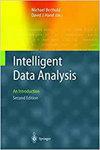SARW: GCN的相似性感知随机漫步
IF 0.8
4区 计算机科学
Q4 COMPUTER SCIENCE, ARTIFICIAL INTELLIGENCE
引用次数: 0
摘要
图卷积网络(GCN)是学习图节点表示的一种重要方法。对于大规模图,GCN会遇到邻域展开现象,这使得模型复杂度高,训练时间长。一种有效的解决方案是采用图采样技术,如节点采样和随机游走采样。然而,现有的采样方法仍然存在聚集过多的邻居节点和忽略节点特征信息的问题。因此,本文针对大规模图的GCN,提出了一种新的子图采样方法,即相似感知随机漫步(SARW)。提出了一种新的相邻节点之间的相似度指标,用于描述节点与相邻节点之间的关系。然后,利用节点特征信息、度信息、邻居集信息等设计相邻节点间的采样概率表达式;此外,我们还证明了基于sarw的GCN模型对于节点表示的无偏性。简化版本的SARW (SSARW)具有更小的方差,这表明我们的子图采样方法在大规模图中用于GCN学习的有效性。在六个数据集上的实验表明,对于大规模图节点分类任务,我们的方法比最先进的图采样方法取得了更好的性能。本文章由计算机程序翻译,如有差异,请以英文原文为准。
SARW: Similarity-Aware Random Walk for GCN
Graph Convolutional Network (GCN) is an important method for learning graph representations of nodes. For large-scale graphs, the GCN could meet with the neighborhood expansion phenomenon, which makes the model complexity high and the training time long. An efficient solution is to adopt graph sampling techniques, such as node sampling and random walk sampling. However, the existing sampling methods still suffer from aggregating too many neighbor nodes and ignoring node feature information. Therefore, in this paper, we propose a new subgraph sampling method, namely, Similarity-Aware Random Walk (SARW), for GCN with large-scale graphs. A novel similarity index between two adjacent nodes is proposed, describing the relationship of nodes with their neighbors. Then, we design a sampling probability expression between adjacent nodes using node feature information, degree information, neighbor set information, etc. Moreover, we prove the unbiasedness of the SARW-based GCN model for node representations. The simplified version of SARW (SSARW) has a much smaller variance, which indicates the effectiveness of our subgraph sampling method in large-scale graphs for GCN learning. Experiments on six datasets show our method achieves superior performance over the state-of-the-art graph sampling approaches for the large-scale graph node classification task.
求助全文
通过发布文献求助,成功后即可免费获取论文全文。
去求助
来源期刊

Intelligent Data Analysis
工程技术-计算机:人工智能
CiteScore
2.20
自引率
5.90%
发文量
85
审稿时长
3.3 months
期刊介绍:
Intelligent Data Analysis provides a forum for the examination of issues related to the research and applications of Artificial Intelligence techniques in data analysis across a variety of disciplines. These techniques include (but are not limited to): all areas of data visualization, data pre-processing (fusion, editing, transformation, filtering, sampling), data engineering, database mining techniques, tools and applications, use of domain knowledge in data analysis, big data applications, evolutionary algorithms, machine learning, neural nets, fuzzy logic, statistical pattern recognition, knowledge filtering, and post-processing. In particular, papers are preferred that discuss development of new AI related data analysis architectures, methodologies, and techniques and their applications to various domains.
 求助内容:
求助内容: 应助结果提醒方式:
应助结果提醒方式:


